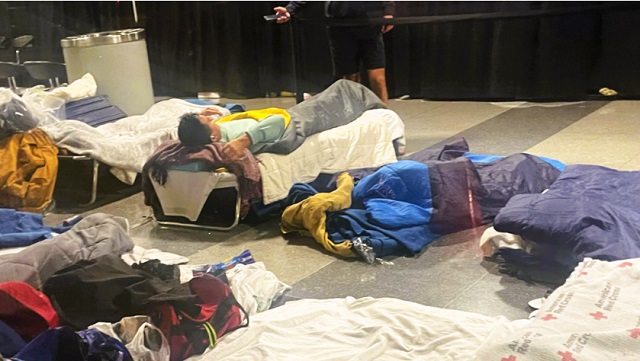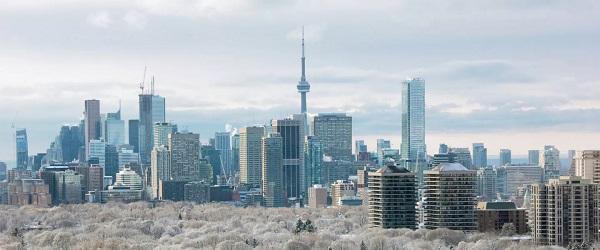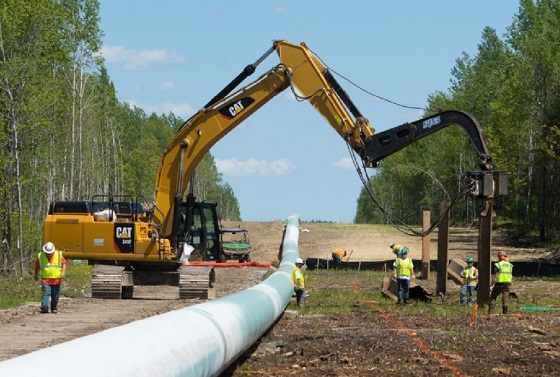Economy
‘What constitutes a border crisis?’ Sanctuary cities have found out

Migrants and migrant bedding inside O’Hare International Airport in Chicago.
From The Center Square
By Tom Gantert
Yeah, you liked them when it wasn’t your problem because you’re not a border state. And then when they show up in Chicago and New York, you’re like ‘What the [expletive] are we going to do with these people?’”
In March 2021, the Los Angeles Times published a story with a headline that asked, “What constitutes a border crisis?”
The story quoted then House Republican Leader Kevin McCarthy as saying, “There is no other way to claim it than a Biden border crisis.”
Then the LA Times asked, “But is it a crisis?”
Just a month later in April 2021, New York City Mayor Bill de Blasio released a statement about his city being a sanctuary city.
“New York City is proud to be a welcoming and inclusive city for immigrants,” de Blasio said at the time.
The debate in the U.S. on migrants took off in April 2022 when Texas Gov. Greg Abbott decided to take a stand against President Joe Biden and what Abbott called an open border policy.
Abbott stated that Biden’s repeal of Title 42 – a pandemic-era policy that allowed the government to quickly expel arriving asylum seekers – had created an “unprecedented surge of illegal aliens” into the country with as many as 18,000 apprehensions a day.
Abbott said that Texas border towns were being overrun by migrants and were overwhelmed. His solution was to bus many of the arriving migrants to sanctuary cities across the U.S.
In August 2022, when the first bus of migrants leaving Texas arrived in New York, Abbott was clear why he had his state paid for the trip. New York had a new mayor by then.
“New York City is the ideal destination for these migrants, who can receive the abundance of city services and housing that Mayor Eric Adams has boasted about within the sanctuary city,” Abbott stated in a news release. “I hope he follows through on his promise of welcoming all migrants with open arms so that our overrun and overwhelmed border towns can find relief.”
And just over a year later, New York Gov. Kathleen Hochul was on CNN in September 2023 pleading with immigrants to “go somewhere else.”
How it has played out was not lost on liberal comedian Bill Maher.
“Could everyone just stop the posturing?” Maher said on a July 2023 podcast with Sharon Osbourne. “Don’t pretend that you love migrants so much and then when we send them to you, you don’t like them. You know? You’re full of [expletive]. And we can see that. Yeah, you liked them when it wasn’t your problem because you’re not a border state. And then when they show up in Chicago and New York, you’re like ‘What the [expletive] are we going to do with these people?’”
New York wasn’t the only destination for Abbott’s buses. He also targeted other sanctuary cities, such as Washington, D.C, Chicago and Denver.
The New York Times published an article in July 2023 that had a headline that asked, “Is Texas’ Busing Responsible for the Migrant Crisis Across Cities?”
On June 14, Abbott’s office stated that it had bused 119,200 migrants to six sanctuary cities since August 2022. That included 45,700 migrants to New York City and 36,900 migrants to Chicago since August 2022. There were also 19,200 migrants bused to Denver since May 2023 and 12,500 migrants bused to Washington D.C. since April 2022.
But Abbott wasn’t alone in busing migrants from the border to locations throughout the country. The Democratic-run city of El Paso also bused migrants north.
Democratic Arizona Gov. Katie Hobbs stated in September 2023 that Arizona was “overwhelmed” by the flow of migrants into her state. Arizona spent $10.5 million transporting 10,247 migrants out of state as of September 2023.
That’s just part of a bigger surge of migrants into the U.S. Since Biden took office in January 2021, about 12 million illegal border crossings have been documented, according to U.S. Customs and Border Protection data and a compilation of “gotaway” data obtained from border agents by The Center Square. Gotaways is the official CBP term to describe those who illegally crossed the border between ports of entry but who were not apprehended. CBP does not publicly release “gotaway” data.
The increase in migrants has hammered the budgets of sanctuary cities.
Washington, D.C. created an Office of Migrant Services with an initial start-up cost of $10 million in 2022. In 2025, the city budgeted $39 million for that office.
Chicago has spent $299 million on migrants since 2022, according to a March 2024 report by the Illinois Policy Institute, and that does not include the hundreds of millions of dollars state taxpayers have paid for costs such as migrant health care.
New York City Mayor Adams said in August 2023 the migrant crisis may cost his city $12 billion over three years.
The city of Denver stated in April 2024 that the increase in migrants has cost it $63 million.
The cost to taxpayers in the state of Texas was $13.4 billion in 2023, according to the Federation For American Immigration Reform. Only California had a higher cost at $30.9 billion.
Ira Mehlman, spokesman for the Federation For American Immigration Reform, said Abbott’s busing strategy has worked.
“His busing policy exposed the hypocrisy of many sanctuary jurisdiction politicians who extolled the virtues of mass immigration regardless of its legality, but are not so happy when they actually have to deal with the real impact of large numbers of migrants,” Mehlman said in an email to The Center Square. “So long as it was someone else’s problem, they were happy to virtue signal and criticize others. Once it became their problem, they demanded that Abbott and others stop sending them migrants. For years, these sanctuary proponents claimed that illegal aliens were a benefit to the country, but are now demanding federal assistance to manage to cover their costs, exposing the fact that illegal immigration imposes huge fiscal costs.”
Tom Gantert
Managing Editor
Business
Canadians love Nordic-style social programs as long as someone else pays for them

This article supplied by Troy Media.
 By Pat Murphy
By Pat Murphy
Generous social programs come with trade-offs. Pretending otherwise is political fiction
Nordic societies fund their own benefits through taxes and cost-sharing. Canadians expect someone to foot the bill
Like Donald Trump, one of my favourite words starts with the letter “T.” But where Trump likes the word “tariff,” my choice is “trade-off.” Virtually everything in life is a trade-off, and we’d all be much better off if we instinctively understood that.
Think about it.
If you yield to the immediate pleasure of spending all your money on whatever catches your fancy, you’ll wind up broke. If you regularly enjoy drinking to excess, be prepared to pay the unpleasant price of hangovers and maybe worse. If you don’t bother to acquire some marketable skill or credential, don’t be surprised if your employment prospects are limited. If you succumb to the allure of fooling around, you may well lose your marriage. And so on.
Failing to understand trade-offs also extends into political life. Take, for instance, the current fashion for anti-capitalist democratic socialism. Pushed to explain their vision, proponents will often make reference to the Nordic countries. But they exhibit little or no understanding of how these societies actually work.
As American economist Deirdre Nansen McCloskey notes, “Sweden is pretty much as ‘capitalistic’ as is the United States. If ‘socialism’ means government ownership of the means of production, which is the classic definition, Sweden never qualified.” The central planning/government ownership model isn’t the Swedish way.
What the Nordics do have, however, is a robust social safety net. And it’s useful to look at how they pay for it.
J.P. Morgan’s Michael Cembalest is a man who knows his way around data. He puts it this way: “Copy the Nordic model if you like, but understand that it entails a lot of capitalism and pro-business policies, a lot of taxation on middle-class spending and wages, minimal reliance on corporate taxation and plenty of co-pays and deductibles in its health care system.”
For instance, take the kind of taxes that are often derided as undesirably regressive—sales taxes, social security taxes and payroll taxes. In Sweden, they account for a whopping 27 per cent of gross domestic product. And some 15 per cent of health expenditures are out of pocket.
Charles Lane—formerly with the Washington Post, now with The Free Press—is another who pulls no punches: “Nordic countries are generous, but they are not stupid. They understand there is no such thing as ‘free’ health care, and that requiring patients to have at least some skin in the game, in the form of cost-sharing, helps contain costs.”
In effect, Nordic societies have made an internal bargain. Ordinary people are prepared to fork over large chunks of their own money in return for a comprehensive social safety net. They’re not expecting the good stuff to come to them without a personal cost.
Scandinavians obviously understand the concept of trade-offs, a dimension that seems to be absent from much of the North American discussion. Instead of Nordic-style pragmatism, spending ideas on this side of the Atlantic are floated on the premise of having someone else pay. And the electorally prized middle class is to be protected at all costs.
In the aftermath of Zohran Mamdami’s New York City win, journalist Kevin Williamson had a sobering reality check: “Class warfare isn’t how they roll in Scandinavia. Oslo is a terrific place to be a billionaire—Copenhagen and Stockholm, too … what’s radically different about the Scandinavians is not how they tax the very high-income but how they tax the middle.”
Taxation propensities aside, Nordic societies are different from the United States and Canada.
Denmark, for instance, is very much a “high-trust” society, defined as a place “where interpersonal trust is relatively high and ethical values are strongly shared.” It’s often been said that it works the way it does because it’s full of Danes, which is broadly true—albeit less so than it was 40 years ago.
Denmark, though, has no interest in multiculturalism as we’ve come to know it. Although governed from the centre-left, there’s no state-sponsored focus on systemic discrimination or diversity representation. Instead, the emphasis is on social cohesion and conformity. If you want to create a society like Denmark, it helps to understand the dynamics that make it work.
Reality intrudes on all sorts of other issues. For example, there’s the way in which public discourse is disfigured on the question of climate change and the need to pursue aggressive net-zero policies.
Asked in the abstract, people are generally favourable, which is then touted as evidence of strong public support. But when subsequently asked how much they’re personally prepared to pay to accomplish these ambitious goals, the answer is often little or nothing.
If there’s one maxim we should be taught from childhood, it’s this: there are no panaceas, only trade-offs.
Troy Media columnist Pat Murphy casts a history buff’s eye at the goings-on in our world. Never cynical – well, perhaps a little bit.
Troy Media empowers Canadian community news outlets by providing independent, insightful analysis and commentary. Our mission is to support local media in helping Canadians stay informed and engaged by delivering reliable content that strengthens community connections and deepens understanding across the country.
Business
Higher carbon taxes in pipeline MOU are a bad deal for taxpayers

The Canadian Taxpayers Federation is criticizing the Memorandum of Understanding between the federal and Alberta governments for including higher carbon taxes.
“Hidden carbon taxes will make it harder for Canadian businesses to compete and will push Canadian entrepreneurs to shift production south of the border,” said Franco Terrazzano, CTF Federal Director. “Politicians should not be forcing carbon taxes on Canadians with the hope that maybe one day we will get a major project built.
“Politicians should be scrapping all carbon taxes.”
The federal and Alberta governments released a memorandum of understanding. It includes an agreement that the industrial carbon tax “will ramp up to a minimum effective credit price of $130/tonne.”
“It means more than a six times increase in the industrial price on carbon,” Prime Minister Mark Carney said while speaking to the press today.
Carney previously said that by “changing the carbon tax … We are making the large companies pay for everybody.”
A Leger poll shows 70 per cent of Canadians believe businesses pass most or some of the cost of the industrial carbon tax on to consumers. Meanwhile, just nine per cent believe businesses pay most of the cost.
“It doesn’t matter what politicians label their carbon taxes, all carbon taxes make life more expensive and don’t work,” Terrazzano said. “Carbon taxes on refineries make gas more expensive, carbon taxes on utilities make home heating more expensive and carbon taxes on fertilizer plants increase costs for farmers and that makes groceries more expensive.
“The hidden carbon tax on business is the worst of all worlds: Higher prices and fewer Canadian jobs.”
-

 Energy2 days ago
Energy2 days agoCanadians will soon be versed in massive West Coast LPG mega-project
-

 Daily Caller2 days ago
Daily Caller2 days agoTom Homan Predicts Deportation Of Most Third World Migrants Over Risks From Screening Docs
-

 Daily Caller11 hours ago
Daily Caller11 hours agoTech Mogul Gives $6 Billion To 25 Million Kids To Boost Trump Investment Accounts
-

 Artificial Intelligence2 days ago
Artificial Intelligence2 days ago‘Trouble in Toyland’ report sounds alarm on AI toys
-

 National1 day ago
National1 day agoMedia bound to pay the price for selling their freedom to (selectively) offend
-

 Alberta1 day ago
Alberta1 day agoNew era of police accountability
-

 C2C Journal1 day ago
C2C Journal1 day agoLearning the Truth about “Children’s Graves” and Residential Schools is More Important than Ever
-

 Business12 hours ago
Business12 hours agoRecent price declines don’t solve Toronto’s housing affordability crisis




